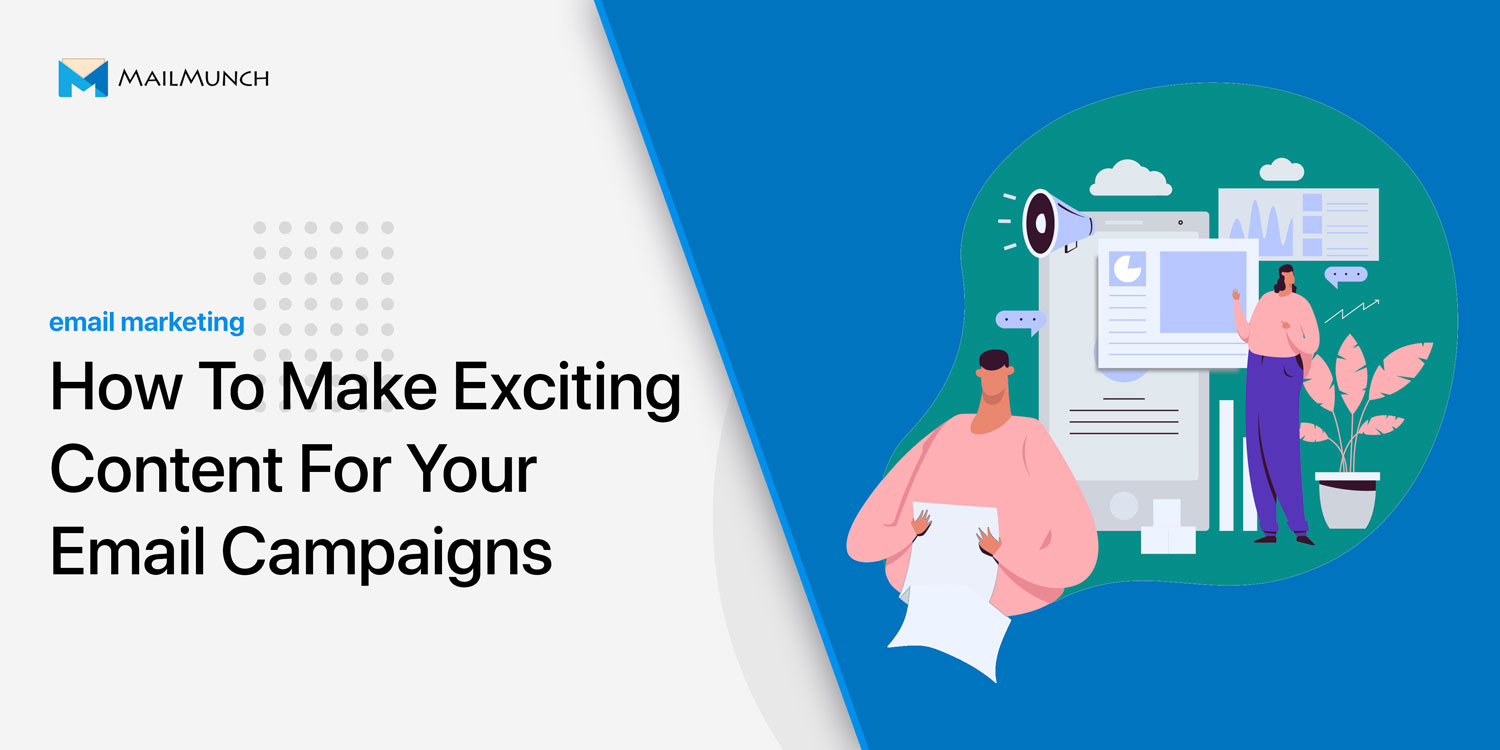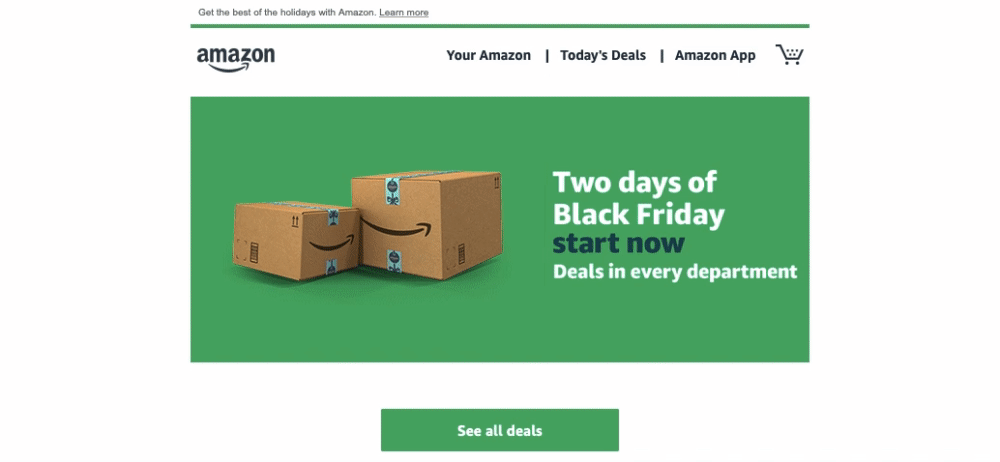

Last updated on
September 15, 2023
Creating and reading the same email newsletters can get really boring. This happens when two common but equally poor approaches to email marketing are applied. Some marketing teams don’t test their campaigns at all, and eventually, stop any email activities because they can’t see whether they’re working on not. Others keep sending the same newsletters over and over again, even when it doesn’t show any significant results. Unfortunately, these marketers fail to understand that if they keep doing the same things, they’ll keep getting the same results.
If you’re tired of sending the same old promotional emails or newsletters, again and again, let’s spice things up and bring some changes to your email marketing strategy. Follow the tips below to create exciting content for your email campaign.
Research shows that over 90% of all information processed by our brains is visual. Moreover, human brains process visual information 60,000 times faster than plain text. As a marketer, you probably know these numbers and understand how visuals can help you engage customers with their terribly short attention spans. So, since it’s a guide to creating non-boring content, we suggest trying a different approach to embedding visuals into emails.
Given the dominance of social media platforms, like Instagram and Tik Tok, using short entertaining videos and GIFs in emails is inevitable. But it's important to note that these types of content aren’t for everyone. If your audience primarily consists of young adults (ages 18-35), go ahead and use memes, GIFs, and short videos to express emotions and introduce your ideas. This Amazon email is a great example of using GIFs to promote sales.

Here are some interesting tips and ideas to follow.
Writing quality and non-boring emails is all about helping out your readers. The more you use email for product promotion and spammy marketing, the more customers decide to unsubscribe.
It’s crucial to show your compassion and desire to help customers as you create your email sequence. Shift your focus on how your customers can benefit from and learn more about your services. Offer free educational content like tutorials, how-to guides, and step-by-step guides to mentor and educate your readers.
Check if your current email design is still up to date. Maybe, you and your subscribers get bored because your current design is outdated and doesn’t reflect your brand’s values anymore.
Simplicity is a crucial element many marketers fail to consider when redesigning their email templates. Your design template should look organic with your message and support it. Overwhelming designs attract too much attention and distract from the actual message. This Chanel’s email design is a great example of employing simplicity to promote products.

When redesigning your template, stick to your brand’s guidelines and personality. Don’t forget to use brand-specific elements such as colors, fonts, brand tone, and logos consistently.
With all that being said, it’s always a great idea to invest in design and work with professional graphic designers. Use your fresh design as an opportunity to speak about a new direction for your business.
People love hearing stories. When we hear an interesting story, our attention shifts, we tend to become emotional and remember more. That’s why a good story has the power to breathe new life into your old email campaign. Not sure how to utilize stories in your emails? Here are some useful tips to follow.
Your subscribers’ junk folders are full of meaningless weekly newsletters, don’t let yours join them. Stop sending your newsletter for the sake of putting something out there.
Calendars will help you track performance and optimize your email schedule. Set up an email publishing schedule that works for you and your subscribers. And finally, send out your newsletter when you have something important and relevant to say.
As humans, we’re biologically predisposed to certain words and phrases. When used strategically, power words can grab attention and influence customer behaviors. Before jumping to google a list of power words, it’s important to set up your goals. Ask yourself: what do you want to achieve? What kind of feelings do you want to invoke?
Power words can trigger certain emotions, so it’s important to carefully choose the kind of words you’re using. For example, words like “amazing,” “score,” and “fearless” are best for encouraging readers. If you want to invoke curiosity, use words like “banned,” “forbidden,” and “ancient.”
Be careful using overpromising and exaggerating words like “jaw-dropping” and “astonishing.” It’s common for marketers to fail to deliver power words, and, as a consequence, over spam content and lose readers’ trust.
Write in short and strong sentences. Use words like “you” and “your” instead of talking to a third-person to make your content more compelling.
Robotic greetings make emails sound boring and monotonous. Instead of automating your greetings, try to make them sound more personal. Try something funny like “Hope you’ve already had your morning coffee" or prompt like “We promise to keep it short.” The creativeness of your greetings is only limited by your imagination. So, go ahead, jog down some greetings, and don’t be afraid to get creative!
Testing your content will help you find your unique voice. A/B tests are great because they show you which aspects of your email work and which of them require optimization. Here is a list of 10 useful email elements you should consider testing.
Make testing a part of your daily working routine. Also, make sure to test one element at a time. It’s harder to interpret results when you test multiple elements simultaneously.
Reward your subscribers when they reach certain milestones. Send out emails showing that you appreciate their continuing interest and offer some extra benefits to thank them. For example, you can offer certain coupons and promotions when customers reach a year-long mark of being subscribers.
Make sure that your subscribers benefit from reading your emails. Share some free content or extra benefits as a way of saying thank you.
Writing non-boring content for your email subscribers takes a pinch of creativity and following the tips above. Avoid writing formulaic and robotic emails. To sound interesting, the flow of your email should be filled with a personal touch. When inspiring your creative self, don’t forget to evaluate and test the effectiveness of your efforts regularly.
Content marketing guru at Mailmunch. I’m passionate about writing content that resonates with people. Live simply, give generously, stay happy.
Tags:

M. Usama
April 19, 2024

M. Usama
April 19, 2024

M. Usama
April 18, 2024